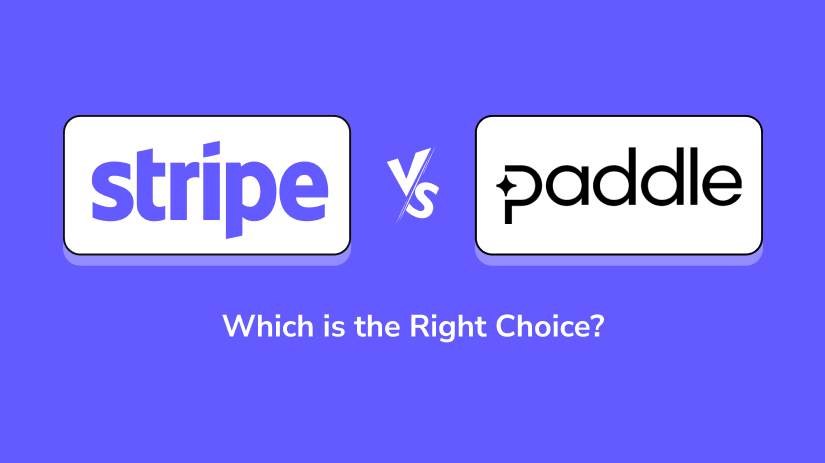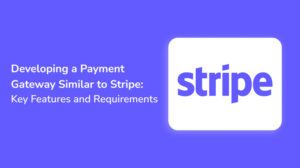In the realm of online transactions and digital commerce, having a reliable payment processing solution is crucial for businesses of all sizes.
Among the myriad of options available, Stripe and Paddle stand out as leading contenders, each offering unique features and functionalities tailored to diverse business requirements.
In this blog post, we’ll delve into the comparison between Stripe vs Paddle to help you determine which one is the right choice for your payment processing needs.
Let’s Begin!!
Connect with us for Fintech Development Needs
Trusted by companies like Plaid, Yodlee, Codat.
Understanding Stripe vs Paddle
Stripe
Founded in 2010, Stripe has rapidly become one of the most popular payment processing platforms globally.
It provides a comprehensive suite of APIs and tools that enable businesses to accept online payments, manage subscriptions, and handle complex payment flows with ease.
Stripe’s developer-friendly approach and robust infrastructure make it a top choice for companies ranging from startups to enterprise-level corporations.
Paddle
Paddle, on the other hand, is a newer player in the payment processing arena, established in 2012.
It focuses on serving software businesses, particularly those selling digital products or subscriptions.
Paddle offers an all-in-one platform that not only handles payment processing but also assists with software licensing, subscription management, and revenue optimization.
Key Considerations of Stripe vs Paddle
Ease of Integration
Stripe
Known for its developer-friendly APIs and extensive documentation, Stripe makes integration seamless for businesses of all sizes.
With clear documentation and robust SDKs, integrating Stripe into your payment app development process is relatively straightforward.
Paddle
Paddle also offers simple integration, particularly for software businesses. Its SDKs and APIs are designed to facilitate the process of setting up payment flows and managing subscriptions within software applications.
Supported Features
Stripe
Offers a wide range of features, including support for various payment methods, subscription management, invoicing, and customizable checkout experiences.
Moreover, Stripe’s ecosystem extends beyond payments, with additional services like Radar for fraud prevention and Sigma for data analytics.
Paddle
While Paddle’s feature set is primarily tailored to software businesses, it excels in areas like revenue recovery, churn management, and localization support. Paddle’s platform also includes tools for managing software licensing and compliance.
Connect with us for Fintech Development Needs
Trusted by companies like Plaid, Yodlee, Codat.
Global Reach and Currency Support
Stripe
With its extensive global presence, Stripe supports payments in over 135 currencies and operates in numerous countries worldwide. This makes it an ideal choice for businesses with an international customer base.
Paddle
While Paddle’s reach is not as extensive as Stripe’s, it still supports payments in multiple currencies and provides localized checkout experiences for customers in different regions.
Pricing and Fees
Stripe
Charges a straightforward fee per successful transaction, with no setup fees or monthly charges. Additional fees may apply for specific features or services, such as Radar for fraud prevention.
Paddle
Paddle’s pricing model is based on a revenue share percentage, which includes payment processing fees as well as fees for additional services like revenue recovery and subscription management.
Which One Should You Choose?
If you’re a software business
Paddle’s specialized features and focus on the software industry may align better with your needs, especially if you require support for software licensing and subscription management.
For general e-commerce or businesses with diverse payment needs
Stripe’s versatility, extensive feature set, and global reach make it a compelling choice. Moreover, if you’re looking to hire Stripe developers, you’ll find a vast pool of talent familiar with the platform’s APIs and tools.
Consider your specific requirements
Evaluate factors such as ease of integration, supported features, global reach, and pricing to determine which platform aligns best with your business goals and objectives.
Conclusion
In conclusion, both Stripe vs Paddle offer robust solutions for payment processing and subscription management, catering to different niches within the digital commerce landscape.
By carefully assessing your business requirements and comparing the features and capabilities of each platform, you can make an informed decision to choose the right payment processing solution for your needs.
Whether you’re building banking software, a payment app, or managing online transactions, selecting the appropriate platform is crucial for the success of your business.
Happy Stripe and Paddle Development!!
Connect with us for Fintech Development Needs
Trusted by companies like Plaid, Yodlee, Codat.





